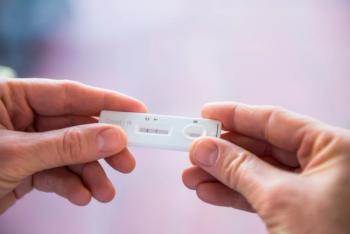Key takeaways:
- AMH levels between 2.1 and 2.8 ng/ml were associated with a 35% to 42% live birth rate in women undergoing fertility treatment.
- Seven studies from 2016 to 2023 were included, with breast cancer and lymphoma being the most common diagnoses.
- Chemotherapy significantly reduced AMH levels, highlighting its immediate gonadotoxic impact.
- Persistently low AMH levels after treatment indicate lasting effects on ovarian reserve and future fertility.
- Researchers call for further studies to identify optimal AMH thresholds based on age, cancer type, and treatment regimen.
Researchers from the Cancer Center at Illinois (CCIL) have highlighted anti-mullerian hormone (AMH) levels as an indicator of the odds for success during fertility treatment, publishing their findings in Frontiers in Oncology.1
Their research indicated a live birth rate between 35% and 42% when AMH levels are between 2.1 and 2.8 ng/ml. This provides an avenue for clinicians to predict success odds in patients undergoing fertility preservation (FP) after chemotherapy, which is currently not possible.1
“The goal of this study was to find out if we could identify certain substances in the blood of young women with cancer that might help predict their chances of having a healthy baby after cancer treatment,” said Hillary Klonoff-Cohen, PhD, CCIL member and study co-author.
Study aims to improve post-chemotherapy fertility predictions
Peer-reviewed, original research articles with female cancer patients who had undergone FP before cancer treatment and had measured AMH levels were eligible for inclusion.2 Articles were obtained through systematic searches of the PubMed and Web of Science databases.
Exclusion criteria included not evaluating in vitro fertilization outcomes after cancer surgery or involving FP before treatment, not measuring AMH, only including childhood cancer patients using cryopreservation, and not being published in English. Extracted data included year of publication, country, first author, study design, hypothesis, sample size, cancer type, and patient age.2
Fertility data such as AMG measurement techniques and interpretation of levels, FP, and reported pregnancy outcomes were also extracted. Studies were also assessed for relevance and quality.2
Baseline AMH levels varied by cancer type
There were 7 studies published from 2016 to 2023 included in the final analysis, 3 of which were prospective and 4 were retrospective. Breast cancer and lymphoma were the most common diagnoses. All studies measured AMH levels at baseline prior to chemotherapy. One study had high relevance, 4 moderate relevance, and 2 lower relevance.2
Healthy controls and breast cancer patients had the greatest AMH levels at baseline, at 3.4 ± 3.3 and 3.07 ± 2.95 ng/ml, respectively. Additional AMH levels included:2
- 2.19 ± 1.89 ng/ml for patients with hematologic malignancies
- 1.3 ng/ml for newly diagnosed breast and hematologic cancer patients
- 2.16 ± 2.41 ng/ml for cancer patients undergoing FP
Chemotherapy significantly reduced AMH levels
A decline in AMH levels was observed in breast cancer patients during chemotherapy, at 0.30 ± 0.50 ng/ml vs 3.07 ng/ml at baseline. This highlighted immediate gonadotoxic effects from cancer treatment.2
AMH levels also remained low following chemotherapy. In breast cancer patients, a drop from 3.07 ng/ml at baseline to 0.15 ± 0.46 ng/ml 1 month after chemotherapy and 0.32 ± 0.68 ng/ml at the last available follow-up was reported. Overall, the data highlighted AMH levels as an indicator of future fertility in cancer patients.
“The next steps for this research include performing studies that identify optimal AMH levels in conjunction with female cancer patients’ age, type of cancer, and treatment regimens,” said Klonoff-Cohen.
Breast cancer trends underscore importance of fertility insights
This highlights an opportunity to improve quality of life in patients with breast cancer, which, according to Erika Hamilton, MD, director of the Breast Cancer Research Program at the Sarah Cannon Research Institute, appears in 1 in 8 US women.3 In an interview with Contemporary OB/GYN, Hamilton discussed breast cancer trends.
While a 40% decrease in breast cancer incidence has been reported since the 1980s, an increase of approximately 1.48% has been reported among younger women. Additionally, Asian American and Pacific Islander women are disproportionately impacted by breast cancer. This highlights the importance of early detection through regular mammograms starting at age 40 years.3
“We want everyone sharing in these breast cancer advances equally moving forward, and decreasing cancer rates and increasing survival for everyone,” said Hamilton.3

















